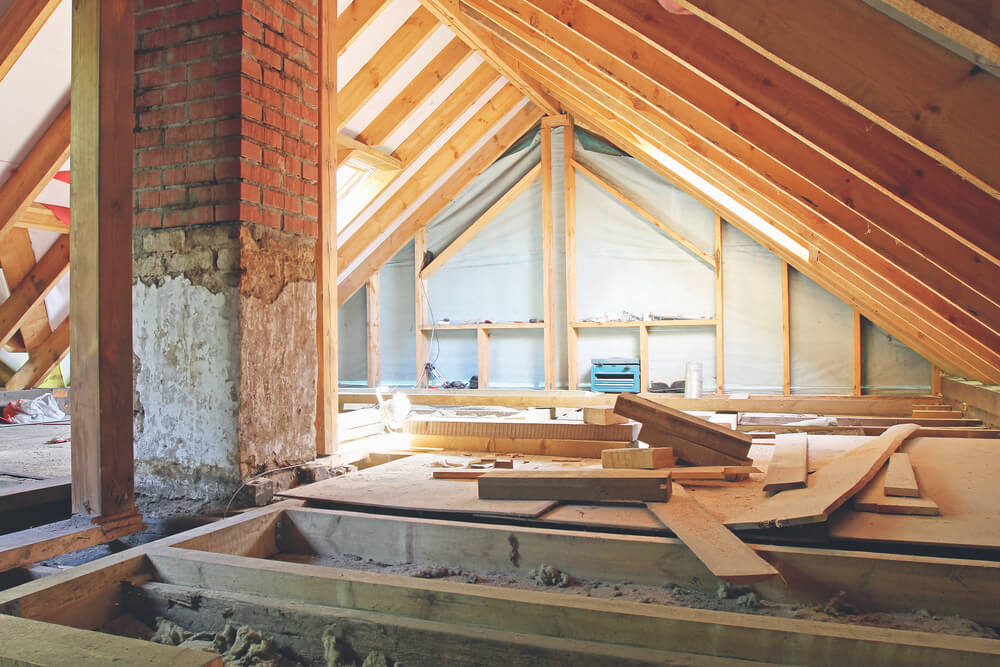Attics have good potential for storage and are less creepier than basements, though not by much. Yet before you start hauling everything but the kitchen sink up that ladder, you should find out if your attic is up for the task.
Assessing your attic for any damages will require a bit of detective work. You’ll want to look for any clues that point to roof leaks. If the roof is even slightly damaged, any belongings you store up there are in danger of being ruined.
Look for a Leaky Roof
By following the path of least resistance, water might have found a way inside your attic, especially if the roof of your house is no spring chicken. When you check for leaks, look for the following signs:
- Ceiling stains right beneath the attic are a clear sign of a leaky roof.
- Damage on the underside of the roof’s sheathing such as stains or signs of rot.
- Bathroom fans that flow to the attic. These fans suck up the moist air from your bathroom and dump it in your attic. On the long-term, this will cause the development of mold and mildew that will attack your belongings. To get rid of the issue, you can reroute the ducts to dump the moisture outside.
- Condensation on windows, roof sheathing and framing is an indicator of poor ventilation.
- Leaks around vent pipes, chimneys or any other objects that go through the roof.
Check the Floor Framing
An attic’s floor structure is also the framing for the ceiling below it, and it’s usually made out of joists. Chances are that the floor won’t be strong enough to support more than one person and heavy furniture. Yet it might be strong enough for typical weight boxes.
Be advised that, while the joists support your weight, the space between them does not. You can circumvent this problem by adding plywood or boards to the joists. Be sure to use screws. Nails can ruin the plaster beneath.
The size of the joists dictates how much weight they can support. If your attic floor has 2×4’s, you’ll only be able to store very light items such as empty boxes and suitcases. If they’re 2×6’s, you could actually fill some of those boxes with lightweight belongings. Joists that are 2×8’s or bigger are better suited for supporting heavier objects.
In order to be safe, it’s best to discuss attic storage suitability with your professional contractor.

Check the Temperature in the Attic for Storage
Most attics are outside a house’s ‘thermal envelope’ which means they’re hotbeds for extreme temperatures. In the summer, the sun heats up the roof tiles, creating an oven-like environment while in the winter, cold air blows through the vents.
If you plan to store any temperature-sensitive items, it’s best to forget about your attic and go for climate-controlled storage space.
While you can always add insulation, the difference in temperature doesn’t make it worth the effort. If it’s not done properly, it can also cause issues with the ventilation. And speaking of ventilation, don’t block any of the vents. It will only lead to condensation.
While attics can be turned into makeshift storage units, most of them are not suited for large, heavy objects such as furniture or temperature-sensitive items like electronics or documents. Always choose the right storage space for the right item in order to avoid any headaches later on.


